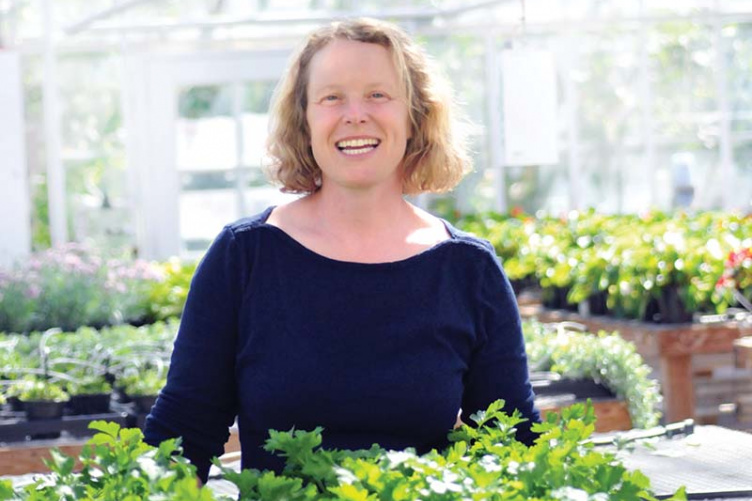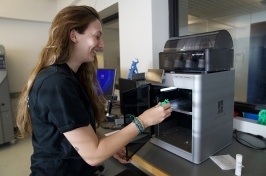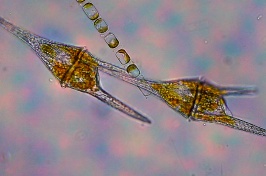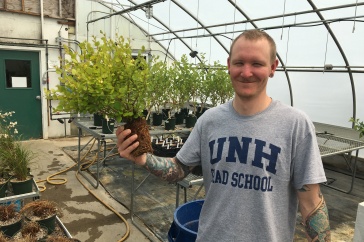
Ever dreamed of growing your own food? Maybe this is the summer that you finally plant a kitchen garden to supply a summer’s worth of veggies and herbs for your home-cooked meals. “A kitchen garden provides fresh, colorful and nutritious vegetables and herbs, and gives you a good excuse to get outside and experience fresh air. I think that edible crops can also be an attractive focal point in your home landscape,” says Becky Sideman, an agriculture expert at UNH Cooperative Extension. “For me, the biggest benefit is the rewarding feeling that comes from preparing food that you grew yourself.” Here are a few tips:
Size doesn’t matter, actually. A kitchen garden can be adjusted to fit the space that you can devote to gardening. Even if you only have a porch or a patio, it is certainly possible to grow a productive container garden: think lettuces, herbs and cherry tomatoes, even cucumbers are good container plants. Plants like winter squash or corn take a lot of space, so you may want to avoid growing them if you have only a small space. But if you’ve decided to devote a chunk of a large yard to growing your own crops, go for it!
Plant what you eat — easy as that. If grilled chicken is a summer staple in your household, for example, focus on a variety of herbs (dill, cilantro and basil are usually the easiest to grow) so you can experiment with some different poultry seasoning combos. Big salad eaters at your house? You can grow everything you need for a tasty, dinner-sized plate of greens pretty easily. Lettuce, spinach, Swiss chard and kale are good growers, as are broccoli, green beans, snap peas, cherry tomatoes and cucumbers.
Know your limits — container gardening might be your best bet. If you’re not much of a green thumb, (i.e., if you’ve been known to kill off plants from neglect in the past) go for a container garden — the only tools you need are plants, soil, pots and a watering can. Start small, so that it is fun and not a chore, and expand once you experience some success.
Grander gardens are doable, with the right tools. The biggest challenge when you create a new garden in an area covered by grass is killing the grass thoroughly before planting. This can be done with equipment like a rototiller, but can also be done more slowly without tools, with heavy layers of mulch or by building raised beds. Once the ground is ready, a trowel for planting and a hoe for weeding are the basic tools you’ll need. Other tools like a wheelbarrow or garden cart, rakes and shovels can be helpful, but I would suggest starting simple and acquiring additional tools only as you find you need them.
Seeds or transplants (a.k.a the little six-packs of tiny plants from your local greenhouse) — both have their merits. It depends. Transplants give you a head start, which is important for crops like tomatoes, eggplants and peppers, so they have enough time to grow and produce fruit before fall frosts come. But for crops like cucumbers, salad greens and herbs, you can plant seeds instead, since they grow relatively quickly. Potatoes are easy to grow from seed tubers, which you can find in garden stores throughout spring and early summer.
Know when to ask for help. Take advantage of our local expertise. Did you know you can get garden know-how in real time? The UNH Extension Home and Garden Education Center and Information Line has great fact sheets and a toll-free number with gardening experts and trained volunteers who can field questions as you go along: http://extension.unh.edu/Gardens-Landscapes/Education-Center-Information..., or (877) EXT-GROW (398-4769) 9 a.m. to 2 p.m., Monday through Friday.
Originally published in UNH Magazine—Spring/Summer 2015 Issue
-
Written By:
Michelle Morrissey ’97 | UNH Magazine | michelle.morrissey@unh.edu



















































